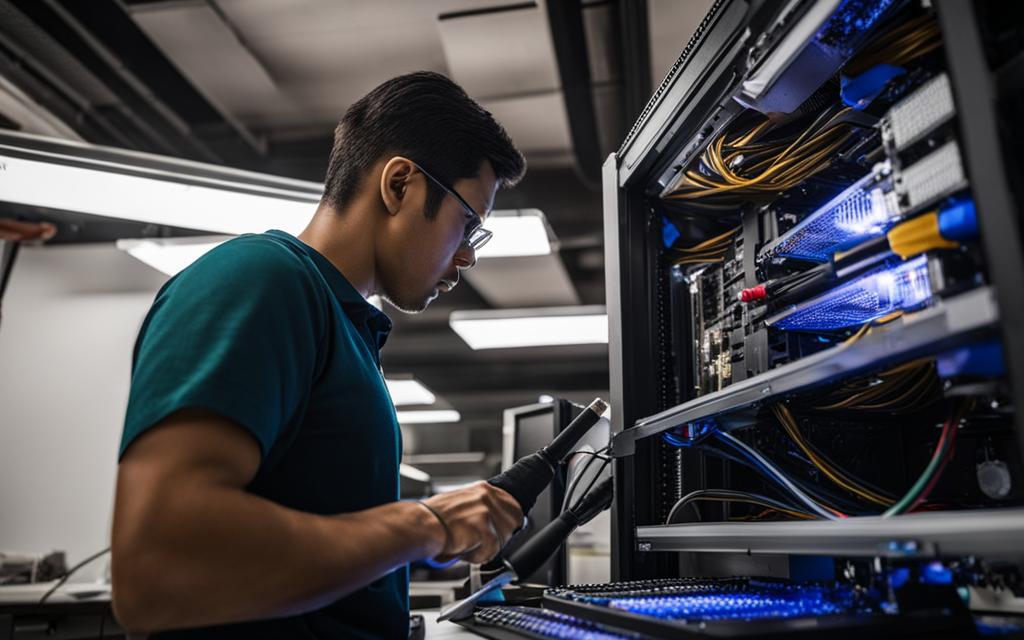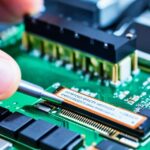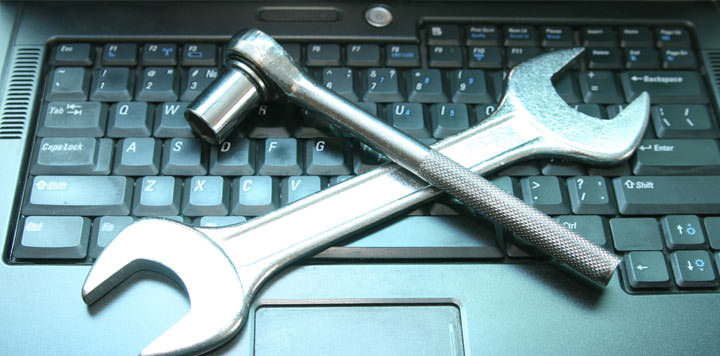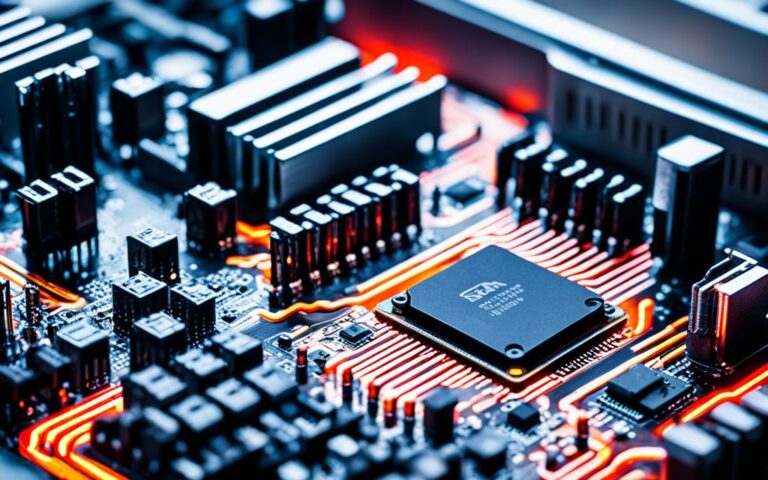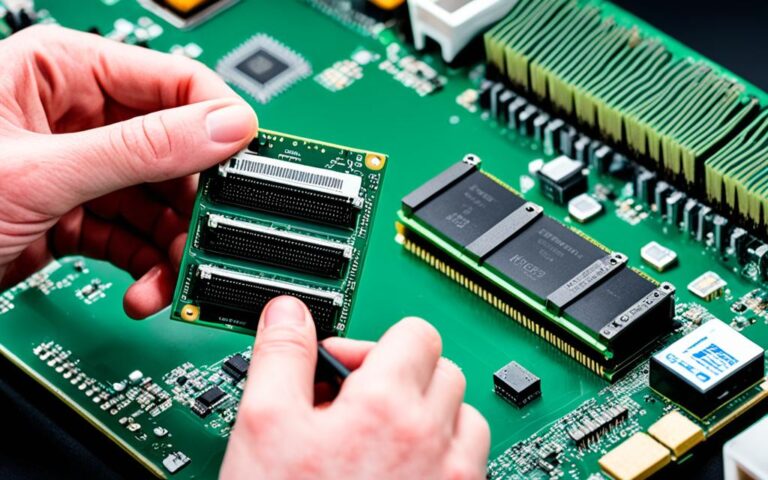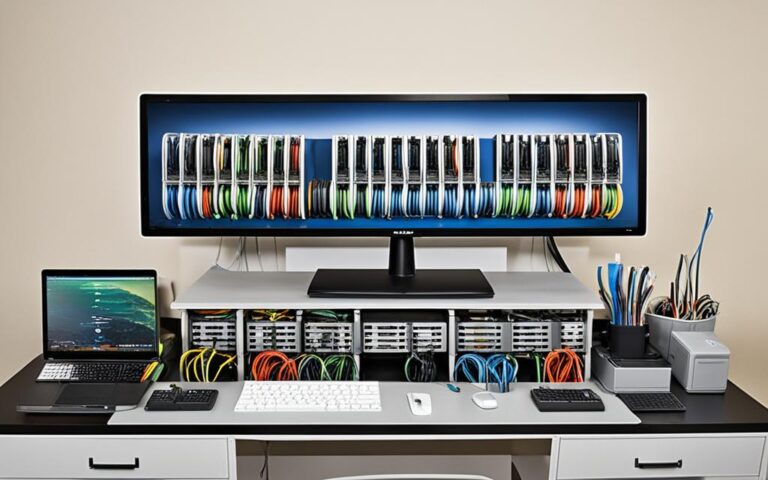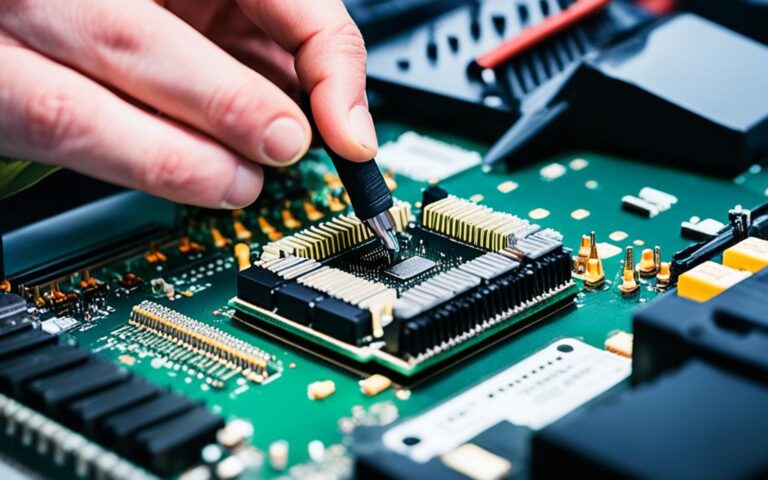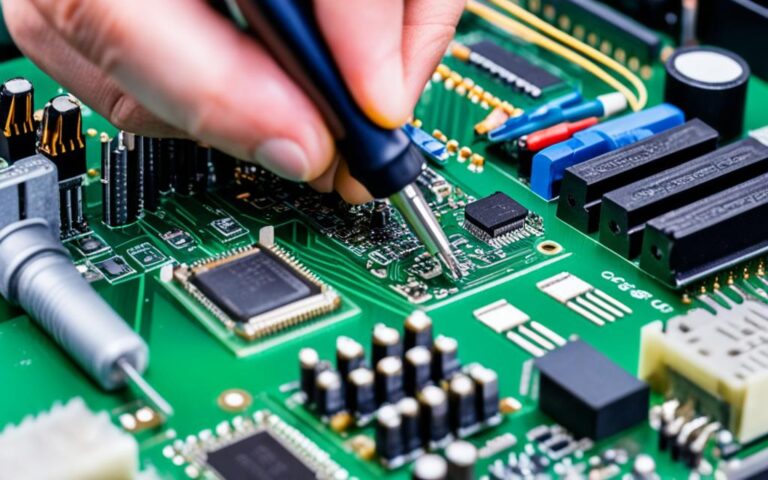Repairing Desktop Computers with No Display Output
Are you facing a frustrating issue with your desktop computer where it turns on, but there is no display output on the monitor? This is a common problem that many desktop computer users encounter. However, there are several troubleshooting steps you can take to fix this issue and get your computer back up and running.
In this article, we will explore common fixes for no display output on desktop computers, as well as how to troubleshoot hardware issues and reset BIOS settings. We will also discuss software solutions that can help resolve the problem and even guide you on data recovery when your computer fails to display anything.
If you are experiencing no display output on your desktop computer, it’s crucial to follow the correct steps to identify and resolve the issue. By following the troubleshooting techniques outlined in this article, you will be equipped with the knowledge to troubleshoot and repair your computer effectively. Let’s dive in!
Common Fixes for No Display Output
When faced with a no display output issue, there are a few common fixes that you can try. By following these steps, you can troubleshoot and resolve the problem.
1. Test the Monitor
Start by testing the monitor to ensure that it is functioning properly. Check the power cable and connections. If possible, connect the monitor to another computer to verify if the issue lies with the monitor or the computer itself.
2. Restart the Computer
Restarting the computer from a completely powered off state can often resolve display output issues. Press and hold the power button until the computer turns off, then turn it back on.
3. Check the Power Supply Voltage Switch
If your computer has a voltage switch on the power supply, ensure that it is set correctly for your region. Check the user manual or the manufacturer’s website for the appropriate voltage setting.
4. Look for Beep Codes
Some computers have a system of beep codes that can provide valuable information about the cause of the display output issue. Listen for any beeps during the startup process and refer to the computer’s manual or the manufacturer’s website to decode the beep codes.
5. Clear CMOS
Important: Clearing the CMOS will reset the motherboard settings to their default values. Proceed with caution and make note of any customized settings before performing this step.
Clearing the CMOS can resolve any misconfiguration in the motherboard settings that may be causing the no display output issue. This can be done by locating the CMOS jumper on the motherboard and shorting the appropriate pins, or by removing the CMOS battery for a few seconds.
6. Reseat Components
Reseating the components inside the computer can help resolve issues caused by loose connections or faulty seating. Start by turning off the computer and disconnecting all cables. Open the computer case and carefully remove and reinsert each component, such as the RAM modules, graphics card, and cables. Ensure that they are firmly seated in their respective slots.
By following these common fixes, you can effectively troubleshoot and resolve the no display output issue on your desktop computer.
Troubleshooting Hardware Issues
If the common fixes did not resolve the issue, it’s important to troubleshoot hardware problems. Here are some steps you can take to identify and fix hardware-related issues:
- Test the Power Supply: Ensure that the power supply is functioning properly, as a faulty power supply can cause selective or intermittent issues. Use a multimeter to check the voltage output.
- Start with Essential Hardware: Disconnect all peripheral devices and start the computer with only the essential hardware connected. This will help eliminate any potential issues caused by external devices.
- Check Cable Connections: Inspect all cables, including the power, data, and display cables, to ensure they are securely connected to their respective ports. Faulty or loose cables can cause display issues.
- Inspect for Hardware Damage: Carefully examine all hardware components for any signs of damage, such as bent pins, burnt marks, or swollen capacitors. Any damaged hardware should be replaced.
If the issue persists after troubleshooting the hardware, it may be necessary to seek professional assistance or consider replacing the faulty components.
| Hardware Issues | Troubleshooting Steps |
|---|---|
| Power Supply | Test the power supply voltage with a multimeter |
| Peripheral Devices | Disconnect all non-essential devices and start the computer |
| Cable Connections | Ensure all cables are securely connected |
| Hardware Damage | Inspect components for any signs of damage |
Resetting BIOS Settings
Sometimes, the no display output issue on your desktop computer can be caused by BIOS misconfigurations. In such cases, resetting the BIOS to its factory default settings can help resolve the problem. It is a straightforward process that can be done within the system’s BIOS menu.
Here are the steps to reset the BIOS settings:
- Start by restarting your computer and continuously pressing the designated key to enter the BIOS menu. The key varies depending on the computer manufacturer, but it is commonly Del or F2.
- Once you are in the BIOS menu, navigate to the “Exit” or “Reset” section using the arrow keys on your keyboard.
- Select the option to “Load Defaults” or “Restore Factory Defaults” to reset the BIOS settings to their original state. This will undo any changes you may have made, including those that might be causing the display output problem.
- After selecting the reset option, confirm your selection and save the changes by following the on-screen instructions. It is important to note that different BIOS interfaces may have slight variations in the options and navigation.
- Once the BIOS settings are reset, exit the BIOS menu and allow your computer to restart.
Resetting the BIOS settings to factory defaults can often resolve display output issues caused by misconfigurations. However, if the problem persists, it may be necessary to investigate other potential causes.
Important Considerations:
When making changes in the BIOS menu, it is advisable to make them one at a time. This way, if any potential issues arise, you can identify the specific change that may have caused the problem.
Remember to save any changes you make in the BIOS before exiting the menu. This ensures that the modified settings are applied and retained.
Software Solutions for No Display Output
In some cases, the no display output issue can be caused by software problems. If you’re facing this issue, there are several software-based solutions you can try to resolve it.
1. Wake Device
If your computer is in sleep or hibernation mode and not waking up, try pressing any key on the keyboard or moving the mouse to wake the device. Sometimes, the display may not turn on due to power-saving settings.
2. Restart Graphics Drivers
If your graphics drivers are causing the no display output issue, restarting them can help. To do this, press Ctrl + Shift + Win + B simultaneously. This command will refresh the graphics drivers and may resolve the problem.
3. Update Drivers
Outdated or incompatible drivers can also lead to a no display output issue. To update your drivers, follow these steps:
- Open the Device Manager by searching for it in the Windows search bar.
- Expand the relevant category (e.g., Display adapters) and right-click on the device.
- Select Update driver and follow the on-screen instructions to complete the update process.
Updating both your graphics drivers and chipset drivers is recommended to ensure optimal performance.
4. Boot into Safe Mode
If your computer still does not display anything, booting into Safe Mode can help in diagnosing and resolving software-related issues. Safe Mode starts your computer with only essential drivers and services, bypassing any potential conflicts or problematic software.
To boot into Safe Mode:
- Restart your computer and continuously press the F8 key during startup.
- Select Safe Mode from the boot options menu.
- Once in Safe Mode, you can troubleshoot software problems, such as uninstalling recently installed programs or running antivirus scans to detect and remove any malware.
5. Perform a System Restore
If all else fails, and you suspect that recent changes to your system have caused the no display output issue, performing a system restore can be an effective solution. System restore allows you to revert your computer’s settings to a previous state, undoing any changes that may be causing the problem.
To perform a system restore:
- Open the Control Panel and search for Recovery in the search bar.
- Click on Recovery and then select Open System Restore.
- Follow the prompts to choose a restore point and initiate the system restore process.
By trying these software solutions, you can troubleshoot and resolve the no display output issue on your desktop computer. However, if the problem persists, it may be necessary to seek professional assistance or consider hardware-related solutions.
Recovering Data from a Computer with No Display Output
In the event that your computer fails to display anything on the screen, it can be a distressing situation, especially if you haven’t backed up your important data. However, with the help of MiniTool Power Data Recovery, a professional data recovery software, you can still retrieve your valuable files. By creating a bootable drive using MiniTool Power Data Recovery, you can scan and recover data from your unbootable computer, ensuring that your important documents, photos, and videos are not lost forever.
To begin the data recovery process, you will need to create a bootable drive using MiniTool Power Data Recovery. Follow the steps below:
- Download and install MiniTool Power Data Recovery on a working computer.
- Launch the software and select the “Bootable Media” option from the main interface.
- Choose the desired bootable edition and follow the on-screen instructions to create the bootable drive.
- Insert the bootable drive into your unbootable computer and restart it.
- Access the boot menu on your computer by pressing the designated key during startup.
- Select the bootable drive as the primary boot device.
- Once the computer boots from the drive, you can run MiniTool Power Data Recovery to scan for and recover your lost data.
Using the intuitive interface of MiniTool Power Data Recovery, you can select specific file types or scan the entire drive to retrieve your data. The software supports various file systems and can recover data from a wide range of storage devices, including hard drives, SSDs, USB drives, and memory cards.
Note: It is recommended that you save the recovered data to a different storage device to avoid overwriting any existing files on the faulty computer.
“MiniTool Power Data Recovery saved me from losing years’ worth of important documents when my computer screens went blank. The bootable drive feature allowed me to access my unbootable computer and successfully recover all my files. I highly recommend this software for anyone facing a similar data loss situation.”
– John Smith, satisfied user
The process of recovering data from a computer with no display output may require technical expertise and patience. If you are unsure or uncomfortable performing the steps yourself, it is advisable to seek professional assistance from data recovery specialists.
| Advantages | Disadvantages |
|---|---|
| Efficient and user-friendly data recovery process. | Requires a working computer to create the bootable drive. |
| Compatible with various file systems and storage devices. | May not be able to recover data if the storage device is physically damaged. |
| Supports selective file type recovery. | Recovery success may vary depending on the severity of data corruption. |
Conclusion
Troubleshooting a desktop computer with no display output can be challenging, but by following the steps outlined in this article, you should be able to identify and resolve the issue. Begin by testing your monitor and ensuring it is functioning properly. Restarting your computer from a completely powered off state and checking the power supply voltage switch are also important troubleshooting steps.
If these common fixes do not solve the problem, further troubleshooting is required. This includes checking for beep codes that indicate the cause of the issue and clearing the CMOS. Reseating all components inside the computer and testing the power supply can help identify any hardware problems.
It’s worth noting that sometimes the issue may be related to BIOS misconfigurations. In such cases, resetting the BIOS to its factory default settings may resolve the no display output problem. Additionally, exploring software solutions such as waking the device or restarting graphics drivers, updating drivers, and performing a system restore can be effective.
Lastly, if you find yourself in a situation where you need to recover data from a computer with no display output, MiniTool Power Data Recovery is a valuable tool. By creating a bootable drive using this software, you can successfully scan and recover your important data. Remember to follow the troubleshooting steps outlined in this article and utilize the necessary tools to fix the no display output issue and recover your data.
